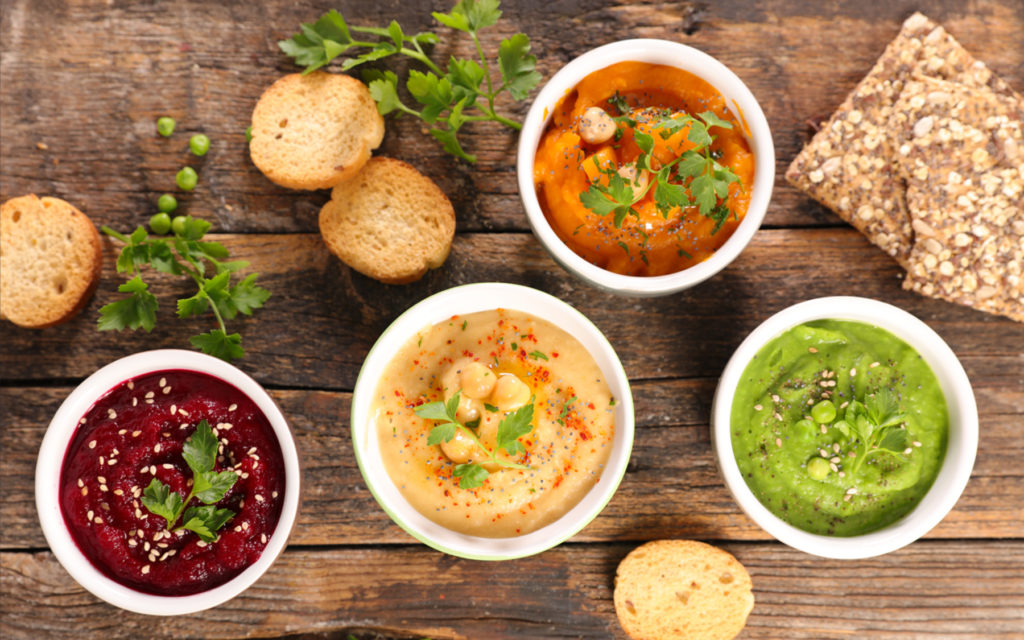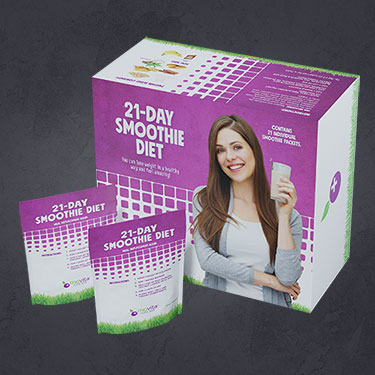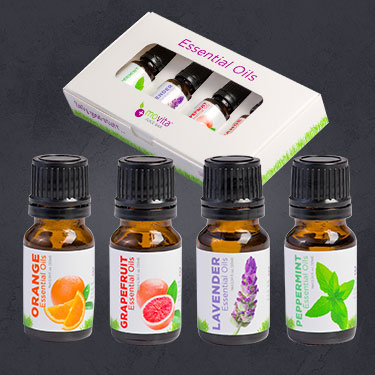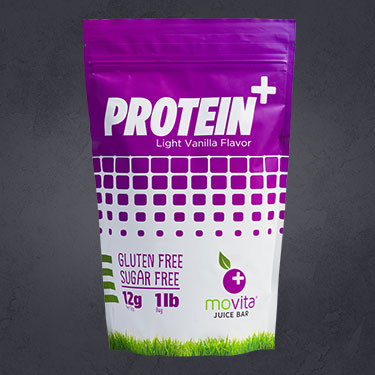
Go to any party, potluck, or picnic; a tub of hummus will most likely be present.
It’s quite popular!!
Over the years, companies have blended roasted red peppers, olives, pine nuts, and even chocolate into their hummuses. The possibilities are endless!
So, given the variety on store shelves today and it’s ubiquity at gatherings of all kinds, what do you need to know about hummus?
Here’s a little fun fact on this dipping concoction.
Nutrition and History: Hummus is thought to have originated in Egypt and is enjoyed by many cultures. The dip is typically made up of chickpeas (AKA garbanzo beans), tahini (sesame paste), lemon juice, garlic, and a few spices. While hummus contains fat, carbohydrates, and some protein, it is technically considered part of the protein food group. Six tablespoons of hummus is considered a serving.
Buying Hummus: When choosing any type of hummus, keep the sodium count low and look for those with 140 mg or less per serving. Most contain minimal (if any) saturated fat given their use of tahini and olive oil. When purchasing dessert hummus, be mindful of how much you’re eating. It’s easy to go overboard on sugar.
8 Great Reasons to Eat More Hummus
- Super Nutritious and Packed with Plant-Based Protein
- Rich in Ingredients Proven to Help Fight Inflammation
- High in Fiber That Promotes Digestive Health and Feeds Your Good Gut Bacteria
- Has a Low Glycemic Index, So May Help Control Blood Sugar Levels
- Contains Heart-Healthy Ingredients That May Reduce Heart Disease Risk
- Promotes Weight Loss and Helps You Maintain a Healthy Body Weight
- Great for Those with Intolerances, as It’s Naturally Gluten, Nut and Dairy-Free
- Incredibly Easy to Add to Your Diet
New Hummus Varieties: What You Should Know
Let’s begin with beet hummus. Nothing “beets” this root vegetable. Beets help create a beautiful crimson hummus that’s lower in sodium than many other hummus varieties. Like other veggie-based hummuses, beet hummus doesn’t eschew the chickpeas entirely. Instead, beets are blended with chickpeas to create a new hybrid.
Black bean hummus, on the other hand, replaces the chickpeas with black beans, which also provide protein, fiber, B vitamins, zinc, and other trace minerals. Check the label for spice level — some of these varieties can pack a punch!
Carrots have also been tossed into the hummus mix. Lower in calories than traditional hummus, this bright orange dip is often made along with white beans and provides beta-carotene and vitamin C plus a few grams of fiber and protein.
Cauliflower has been riced, diced, and now made into hummus. Why not? Cauliflower hummus tends to be lower in calories but similar in fat content when stacked up against other types. Look for fillers like xanthan gum that may be added for texture.
Chickpeas are the base for classic hummus. As mentioned above, roasted red pepper, spicy jalapeño, and even chocolate varieties that rely on chickpeas as a base are available in stores now. Calories can vary from brand to brand. Most hummus provides about 50 to 80 calories per tablespoon. Dessert varieties will have added sugar.
Dessert hummus started with dark chocolate and pumpkin pie flavors, but don’t be surprised if you come across vanilla bean, chocolate mint, or red velvet hummus. Sugar content will vary per brand, but on average, expect roughly 5 to 6 grams per serving. This is much lower than eating a chocolate bar but be sure to control the serving size.
Edamame hummus is one of the newer types on the block and is made with green soybeans. One advantage of soybeans over more traditional beans is a slightly lower carbohydrate count for those concerned with carb intake. Like other hummuses, edamame hummus provides 6% of the daily value for iron.
Lentils lend themselves well to hummus given their creamy texture and “dippability.” Some aren’t fully lentil-based, joining forces with of white beans along with spices that can include jalapeño peppers, dried onion, vinegar, and salt.
White beans are like black beans, so it makes sense to whip them into a delicious dip, and the resulting food looks more like its chickpea counterparts than many of the other varieties we discussed. Most are paired with garlic, olive oil, spices and tahini. Like other flavors, white bean hummus provides a few grams of protein and fiber per serving and 6% of the daily value for iron.
You can also make your own hummus: Making hummus from scratch is quick and economical Here’s a fun recipe that has gotten rave reviews.
Hummus
Serves 9 | Serving Size: 2 tablespoons
Total Time: 5 min | Prep: 5 min | Cook: 0 min
This low-fat version of the classic Middle-Eastern dip goes well with raw veggies and whole wheat pita triangles. It also makes a delicious sandwich or bread spread.

Ingredients:
1-1/2 cups cooked or canned garbanzo beans, rinsed & drained
1/2 cup nonfat plain yogurt
1 teaspoon minced garlic
1 tablespoon lemon juice
1 teaspoon cumin
1/4 tsp sesame oil (optional)
Directions:
Place all ingredients in blender or food processor, blend until smooth. Refrigerate until ready to use.
Allergens: Milk, Tree Nut
* Reported allergens are based on listed ingredients in the recipe. If you are purchasing commercially packaged products such as pie crusts, cereal, or pasta, you need to read the label for additional allergen information.
Or if you’d like to give your plain hummus a little more pizzaz, add your own cooked vegetables to store-bought dip. I would recommend trying beets, carrots, or cauliflower. Just think of how creative you can be!
Here are a few other ways to “spread the love” with hummus…
- Try hummus on a whole wheat English muffin and enjoy it at breakfast.
- Add hummus to your salad in place of dressing.
- Use hummus as a sandwich spread instead of mayonnaise.
- Enjoy hummus with grape tomatoes, carrot and celery sticks, sugar snap peas or raw broccoli and cauliflower cuts.
- Enjoy dessert hummus with apple slices, dates or dried apricots.
We’ve always got lots to share, so don’t forget to visit us for our next blog!
And follow us on Instagram @movitajuicebar for more fresh, healthy & nutritious items!
DISCLAIMER: These statements have not been evaluated by the FDA. The information is for informational purposes and is not intended to treat, diagnose or cure any illness. Consult a physician before taking any action.
Want to contribute great content?
We are looking for contributors provide our readers with great healthy content to encourage positive living. If you're interested in becoming a contributor pease email us at blog@movitajuicebar.com



